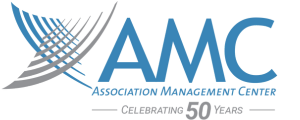
Board and Staff Relationships: For Better or For Worse?
Like many relationships in life, the board-staff relationship can be really great, with the board and staff working as a cohesive and collaborative team. Or, they can be more challenged, potentially leading to feelings of distrust and disillusionment and suboptimal performance.
So, how then do you ensure a mutually beneficial and successful relationship between board members and the staff who support associations? That’s one of the concepts AMC board and governance leaders focused on at a recent Leading Practices webinar for our association partners.
During the webinar, Dave Bergeson, vice president of client relations who has worked closely with boards and their staff for more than 20 years, shared a few best practices for better (and not for worse) board-staff relationships.
Clarify Roles
Clarity in roles for both board members and staff is one of the most critical pieces to a successful partnership. Both board members and staff have much that they’re trying to accomplish in support of their organizations, but neither can do their jobs effectively if they don’t know exactly what their respective roles and responsibilities are.
A lack of clarity in roles can cause both to waste time and energy focusing in on the wrong area, leading to frustration and also missed opportunities for the organization.
Ensure your board members—and staff—know what is expected of them and what their respective roles are in supporting the organization. In general, the Board/staff team is effective when directors focus on the what and why, and staff focuses on the how (and some of the what and why).
Let the Strategic Plan Guide You
Simply put, the most successful associations do fewer things better. They focus on quality not quantity when it comes to initiatives they undertake or what they offer members. They remain mission focused and let their strategic plan guide them.
Keep in mind that those initiatives and activities that don’t bring value to your organization can severely limit the amount of time that staff and the board have remaining to focus on the things that do bring value to your members, stakeholders, and constituents.
Beware of Committee Overload
Committees can be a beneficial tool to accomplishing priorities, a space where some of the most important work of the association gets done, and a great opportunity for your association members to get involved.
Be careful, however, about forming too many.
Committees can require a significant amount of staff time to manage and maintain, and if left unchecked can stray from your mission and eat up resources. From scheduling meetings and planning agendas with committee chairs to drafting minutes and following up on action items post-meeting, committees can divert staff time and resources from those activities and initiatives your organization truly values.
Everything important to an association doesn’t require a committee. Instead, use them judiciously—better yet, use time-bound task forces—when they will bring the most value to what your organization wants to accomplish.
Get Social
In Leading with Intent, Boardsource notes that boards who socialize with one another are more likely to function as a collaborative team. The same holds true for boards and staff who socialize with another. Connecting outside the formal confines of emails and committee calls, gives boards and staff the opportunity to get to know each other better, deepening the board-staff partnership, building trust, and leading to a more effective board.
At your next board meeting, try your best to incorporate time to socialize once the formal meeting is adjourned. You’ll ensure both board and staff are working well together—and have a little fun too.
Be the first to know about the latest articles, news, and events from AMC. Sign up for our emails!


